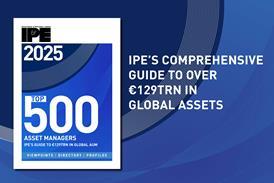TPT’s quest to support UK DB pension schemes

Peter Smith, investment director at TPT, the consolidator of UK DB pension schemes, talks to Pamela Kokoszka about the latest developments in investment management at the organisation
You have now reached your article limit
Already a registered user or member? Sign in here
To continue reading, register free today for access
Registration also includes access to

Five reasons to register today
- Access to IPE articles from our award-winning editorial team
- Unique IPE market data, rankings and tables
- In-depth interviews with pension fund leaders
- Extensive coverage of latest asset class trends
- Comprehensive archive of data, research and intelligence









